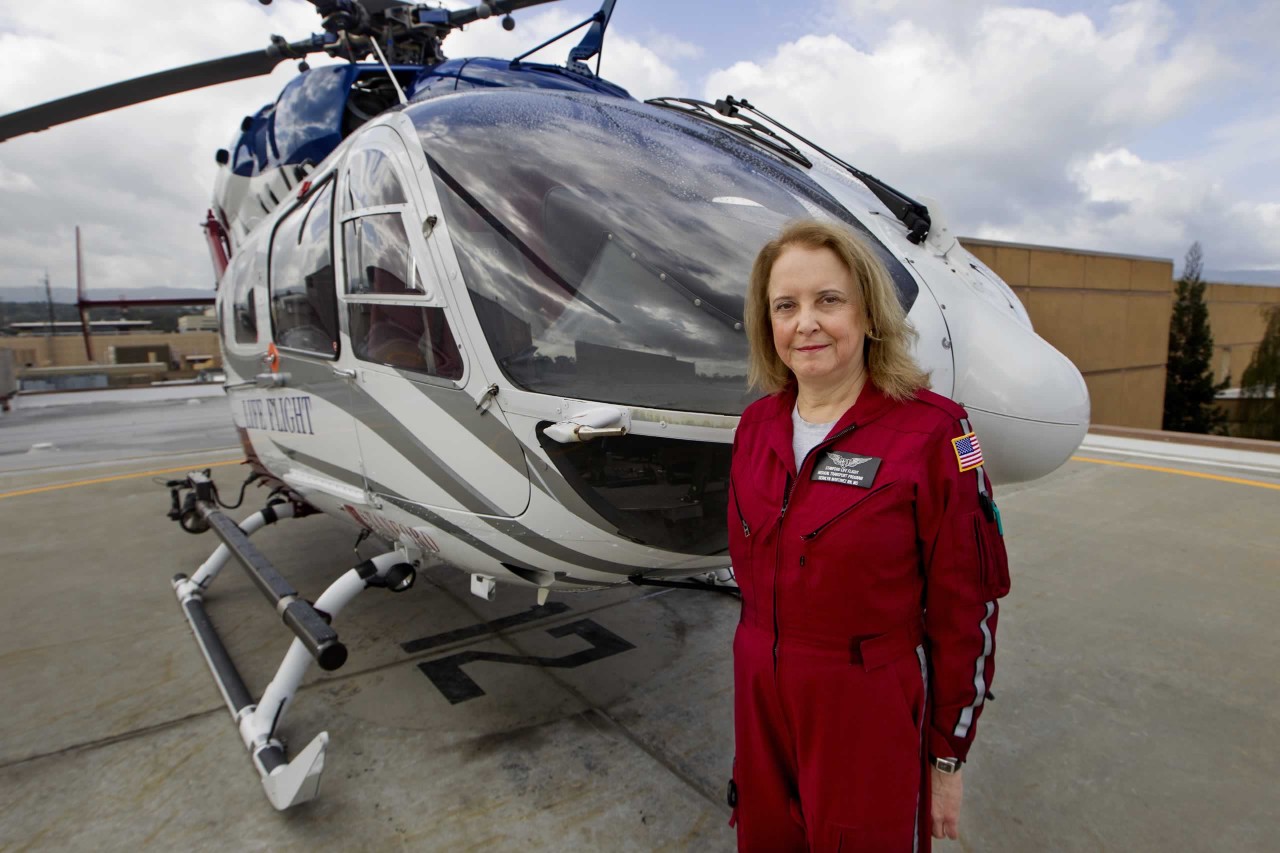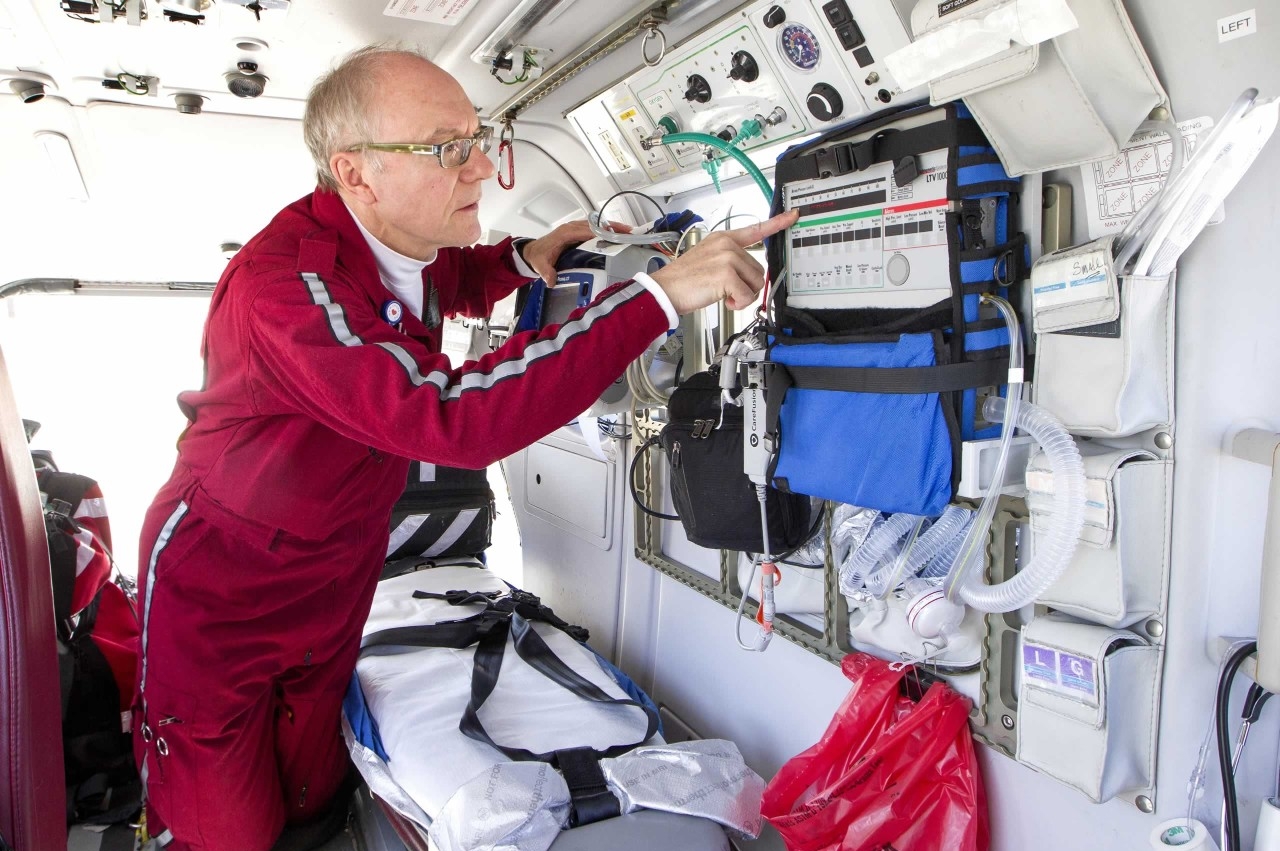Life Flight at 30
Inside Stanford’s rescue helicopter

It was May 1984. A 70-year-old woman critically injured in a car accident in Santa Cruz County became Stanford Life Flight’s inaugural patient. With that flight, Life Flight became the first helicopter emergency services program in the San Francisco Bay Area, and Stanford Hospital became the first medical center in the region to have its own helicopter and air medical transport team.
Thirty years and thousands of flights later, Life Flight launches its helicopter and crew — a pilot and two nurses — up to three times a day and averages about 700 flights annually, ranging as far south as Santa Barbara and as far north as the Oregon border. Between 30 and 40 percent of those flights carry children to the neonatal intensive care unit of Lucile Packard Children’s Hospital Stanford. Adult patients are most often transported to Stanford Medicine for stroke, cardiac or trauma care.

Some of the flight nurses have been on board for years, even decades. To be considered for the crew requires years of experience, as well as extensive clinical qualifications and exceptional interpersonal skills.
“People say, ‘I bet your staff is a bunch of Type-A personalities,’” says Michael Baulch, RN, JD, Life Flight’s program manager. He dissents. “I want the Type-D personality whose heart rate never goes up. When you land on a highway where there are badly injured people, you want someone to step in and infuse a sense of calm into the situation.”
Most of the nurses have advanced certifications in flight nursing and critical care specialties, and several have graduate degrees. Flight nurses also assist when needed with trauma alerts in the emergency department and help in the intensive care units with advanced procedures, such as arterial lines and intubations.
“It’s a very collaborative, team-centered approach,” says Geralyn Martinez, RN, a Life Flight nurse since 1990. “Our job has evolved greatly over the years.”
The program now has a faster, larger helicopter than its first model with medical equipment that is compact, lightweight and rugged. “We have benefitted from war-zone medical care techniques developed by the military overseas,” Baulch says.
It’s the only flight program in Northern California able to transport critically ill cardiac patients who need advanced equipment such as an intra-aortic balloon pump. Its helicopter is equipped with instrument-aided flight technology that makes transport in inclement weather safer. The crew also wears night vision goggles for all nighttime flights to aid visibility and improve safety.
It’s one of just a few such programs with professionals qualified to insert a catheter into an artery to monitor blood pressure in critically ill patients, Baulch says. “And we have nurses who are world experts in dialing in the optimal setting for a patient breathing on a ventilator,” he adds.
Beneath all the technology and specialized training, however, remains the power of a calming voice. “A patient wrote me a very nice letter to say thanks,” says Life Flight nurse David Bevin, “because I leaned over her and said, ‘You’re going to be OK. You’re going to make it to Stanford.’”

